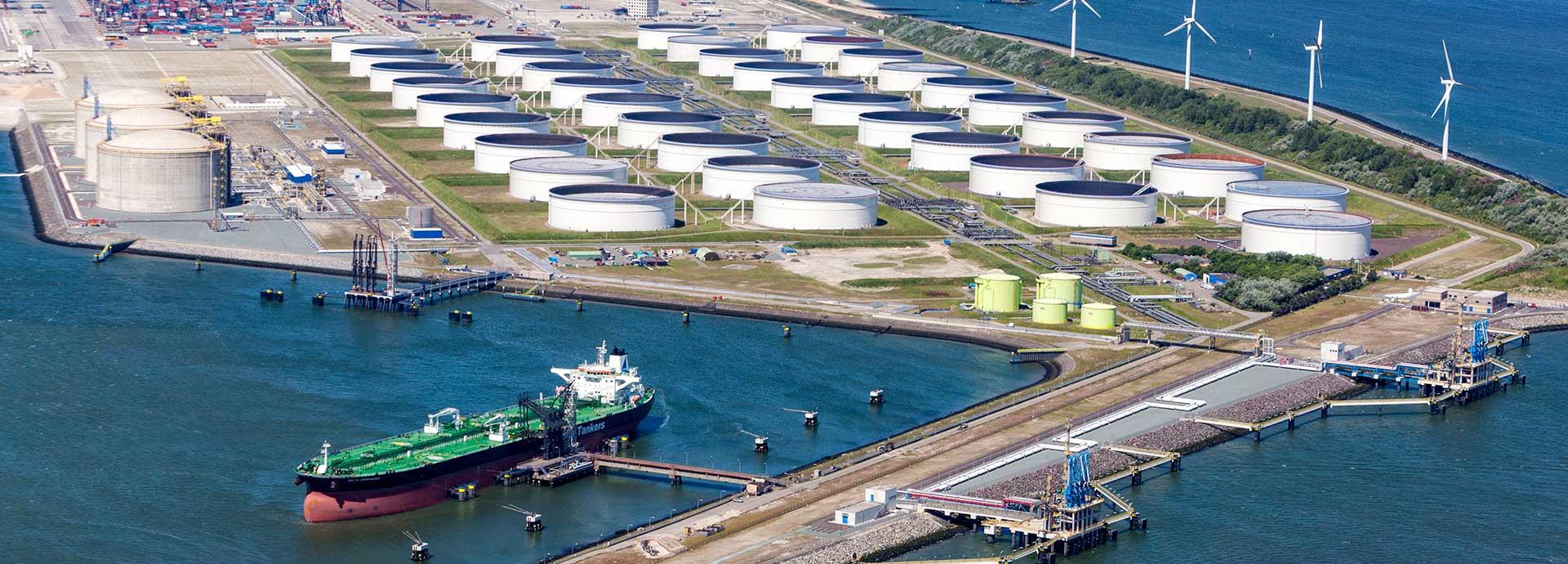

Stricter environmental regulations are changing the way the maritime industry views conventional fuels. Many organisations are looking at gradually abandoning the use of polluting heavy fuel oils, in favour of cleaner, more sustainable fuels like liquefied natural gas (LNG). But the big question on everyone’s mind is whether the infrastructure needed to make LNG fuel usage more prevalent, be ready in time?
Go Green is everyone's mantra these days and rightly so, considering the massive toll that pollution has taken on the planet. Governments, corporations and citizens alike are doing their bit by adopting clean energies, technologies and products. And this trend has caught the shipping industry in its wake.
The recent, most telling sign of this shift has been exemplified by the Port of Rotterdam, the largest in Europe. It has expanded its GATE terminal to a third berth for the loading of small LNG vessels and tankers. Meaning, this will help distribute LNG not only to other terminals, but most importantly to oceangoing vessels, a feat that had proved difficult in the past due to lack of infrastructure.
One of the driving factors behind the push towards alternative fuels like LNG from heavy fuel oils (HFOs) can be owed to decisive environmental regulations set out by the International Maritime Organization (IMO). Starting January 2020, a global sulphur cap of 0.5% will be imposed on ships trading outside of emission control areas. Currently, this limit is capped at 3.5%.
“When switching usage from HFO to LNG, there is a significant reduction of emissions. The sulphur oxides are completely removed, nitrous oxide is significantly reduced and so called local emissions particles are basically eliminated. That is clearly one of the major benefits which is enabling shipping to become more green,” says Timo Koponen, Vice President, Flow & Gas Solutions, Wärtsilä Marine Solutions.
The effect of the IMO regulation clubbed with the ‘go green’ attitude of companies can be seen in the demand for LNG fuelled ships.
Globally, as of February 2017, there were about 100 LNG fuelled ships in operation and 101 LNG fuelled ships are on order, according to international certification body Det Norske Veritas (Norway) and Germanischer Lloyd (Germany) – popularly known as DNV GL.
In addition to this, about 72 ships, either in operation or on order, are also up for conversion from conventional fuels to LNG.
Cost also plays a key role in boosting demand for LNG fuelled vessels.
“We expect the price of the 0.5 per cent fuel to be somewhere in between HFO and marine gas oil (MGO). This will offer an additional incentive to ship owners thinking about switching to LNG, in order to achieve compliance with the upcoming sulphur cap. Generally, we expect to see more interest in LNG as ship fuel and a greater number of new buildings using LNG propulsion. The impact will be felt the most in the deep sea ship segments,” explains Martin Wold, Senior Consultant Environment Advisory at DNV GL.
Challenges ahead
However, it isn’t all smooth sailing for LNG becoming the future shipping fuel. Many in the industry believe that competitive oil prices, as they are currently, may yet affect the interest in LNG as a fuel source. But experts say that this isn’t necessarily true.
“The LNG industry had high expectations for the introduction of the ECA Sulphur requirement in 2015 to be remembered as the point in time when LNG fuel for ships really took off. The coinciding collapse of the oil price was naturally a disappointment to the supplier industry that had been investing heavily in R&D and sales activities for several years. While many have felt like the interest for LNG fuelled ships had reduced, DNV GL records show that the number of new build orders has actually kept steady throughout this time,” says Wold.
The greatest hindrance, though, to LNG being adopted globally is the lack of infrastructure and bunkering facilities. But there is a way around the problem. Companies like Wärtsilä are providing dual-fuel engines that can run on both LNG and conventional LFO, HFO or liquid biofuels.
“A very important piece of this puzzle is to get more major ports involved with LNG bunkering facilities like Rotterdam has been,” says Koponen. “When it comes to bunkering, there needs to be a matrix of different facilities and solutions going forward, " he adds.
Koponen says significant investments are being made in this area. “Singapore, which is investing heavily in LNG. We are starting to have bunkering facilities all around the Baltic sea - like at Finnish ports. I know that other ports are also seeing this as an opportunity to differentiate by being able to bunk LNG,” he says.
Future of LNG as shipping fuel
Koponen is right. LNG’s popularity (as an alternative fuel) is gaining momentum in the ever important cruise industry. Wold explains why.
“With 11 such vessels on order, the demand for LNG fuel will rise by about 300,000 to 500,000 tons per year. By comparison, we estimate that the consumption of the current fleet in operation adds up to about 250,000 tons per year. Therefore, the decisions made in the cruise sector will have a significant impact on the whole industry. Such bunker volumes will give LNG suppliers the confidence to invest in additional LNG bunker vessels, which will likely be the preferred way of supplying these ships,” he argues.
By 2020, DNV GL estimates that about 400 to 600 LNG bunker vessels will be operational globally. Given the progress thus far, industry giants believe that it will definitely be one of the most significant alternative fuels going forward. Well, let’s wait and watch.
Did you like this? Subscribe to Insights updates!
Once every six weeks, you will get the top picks – the latest and the greatest pieces – from this Insights channel by email.